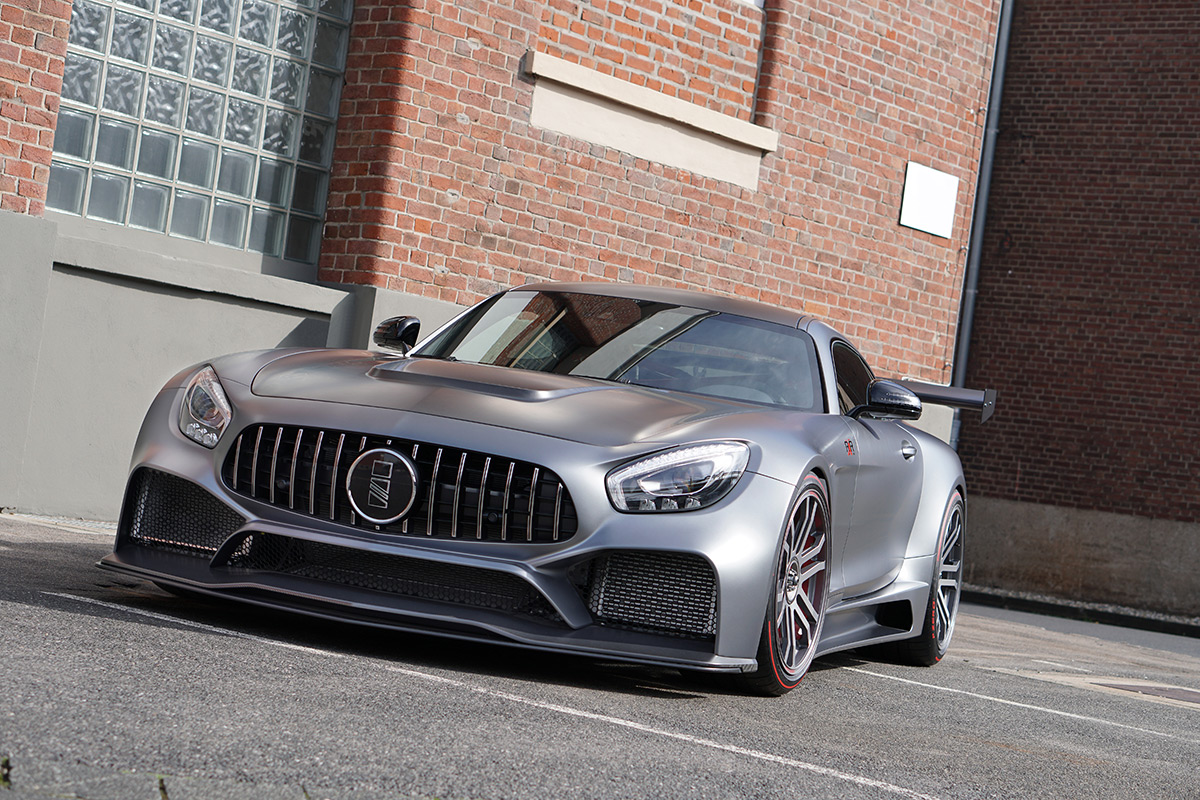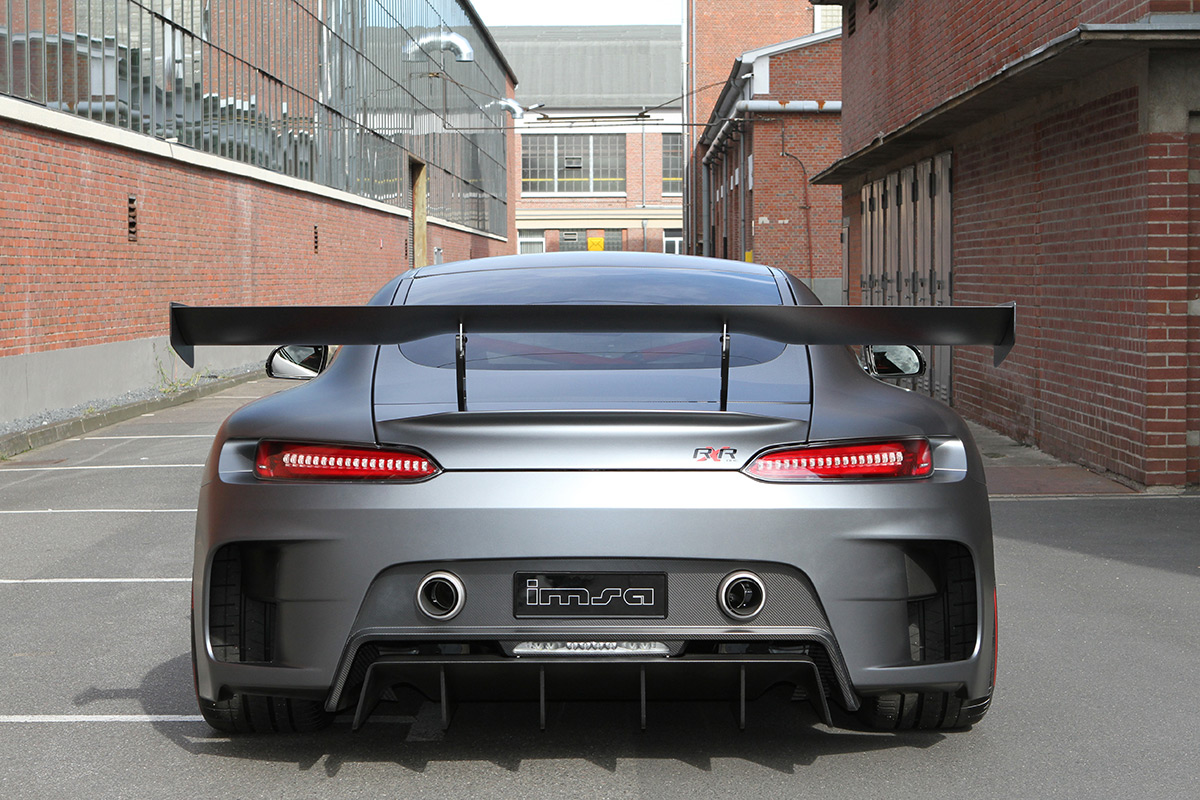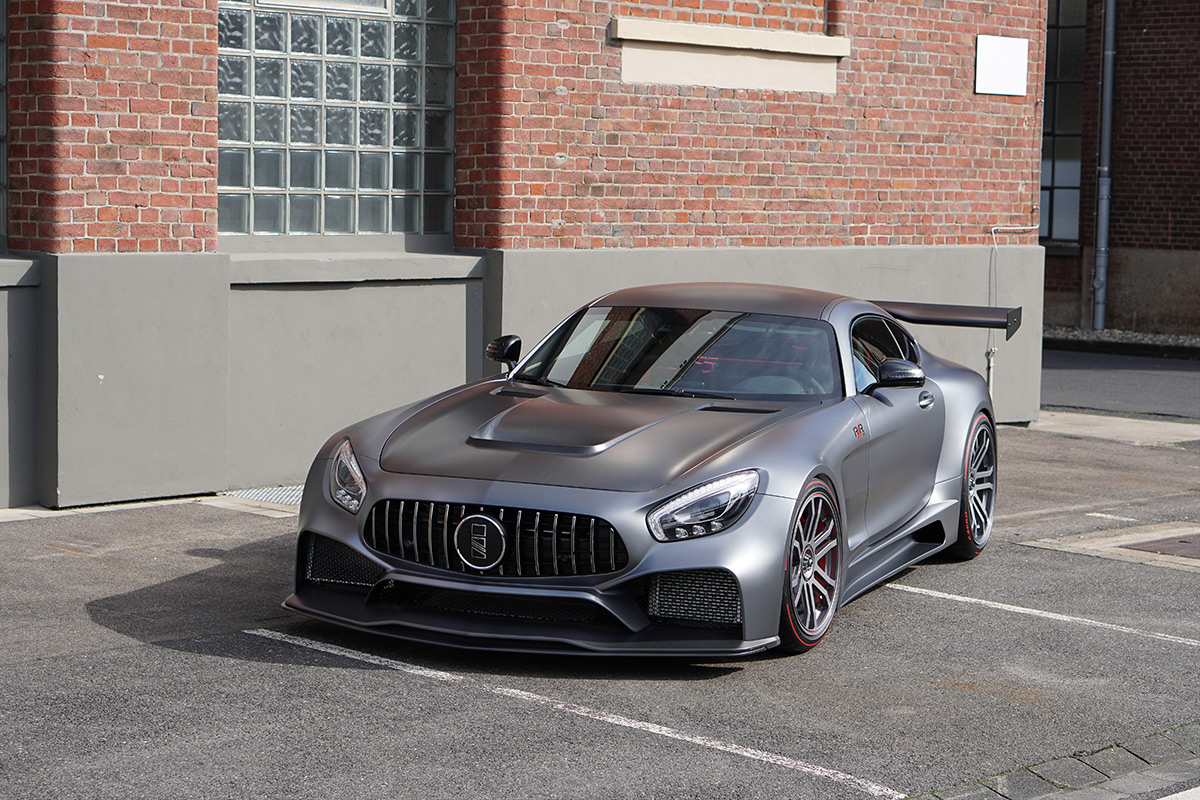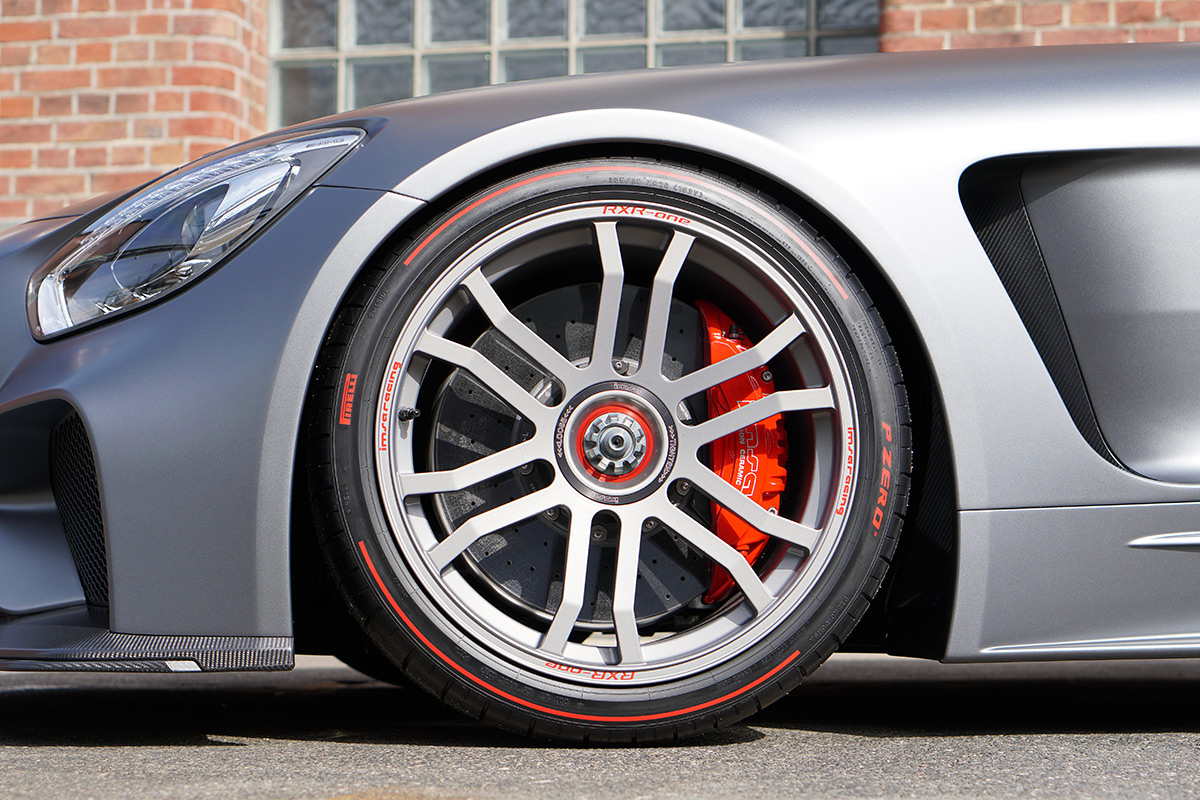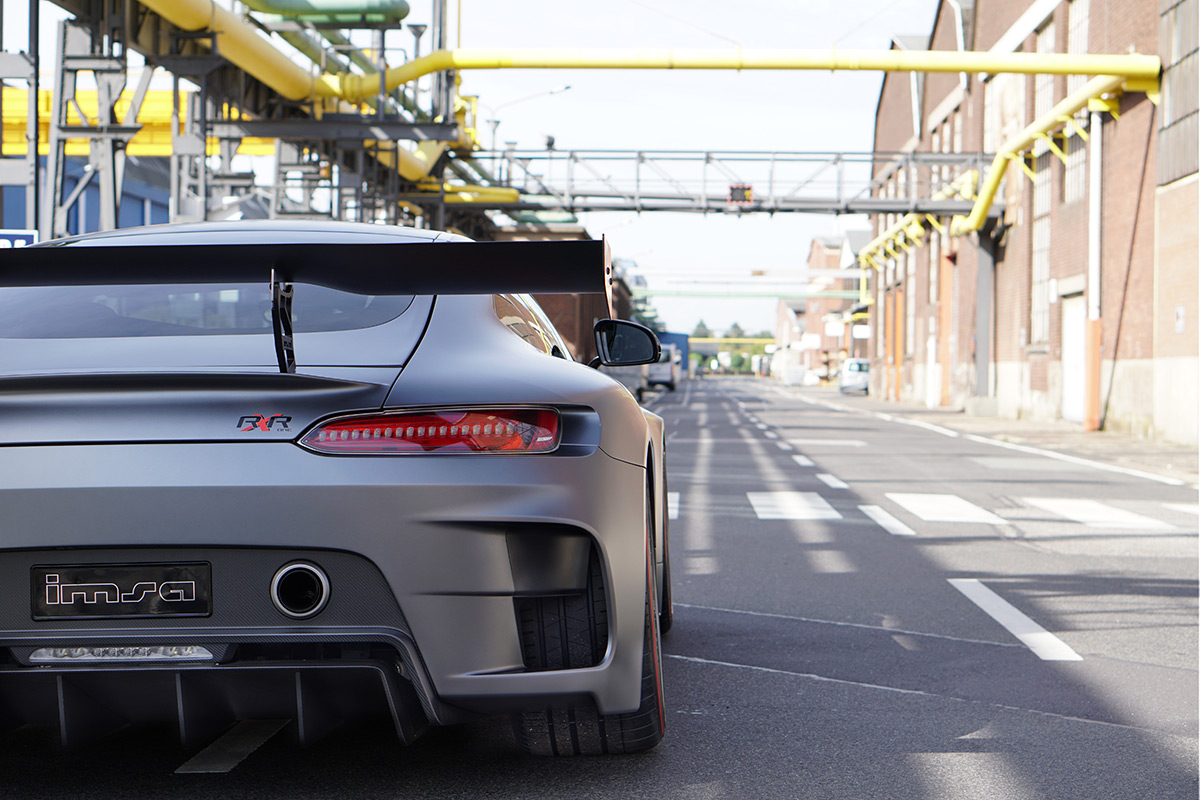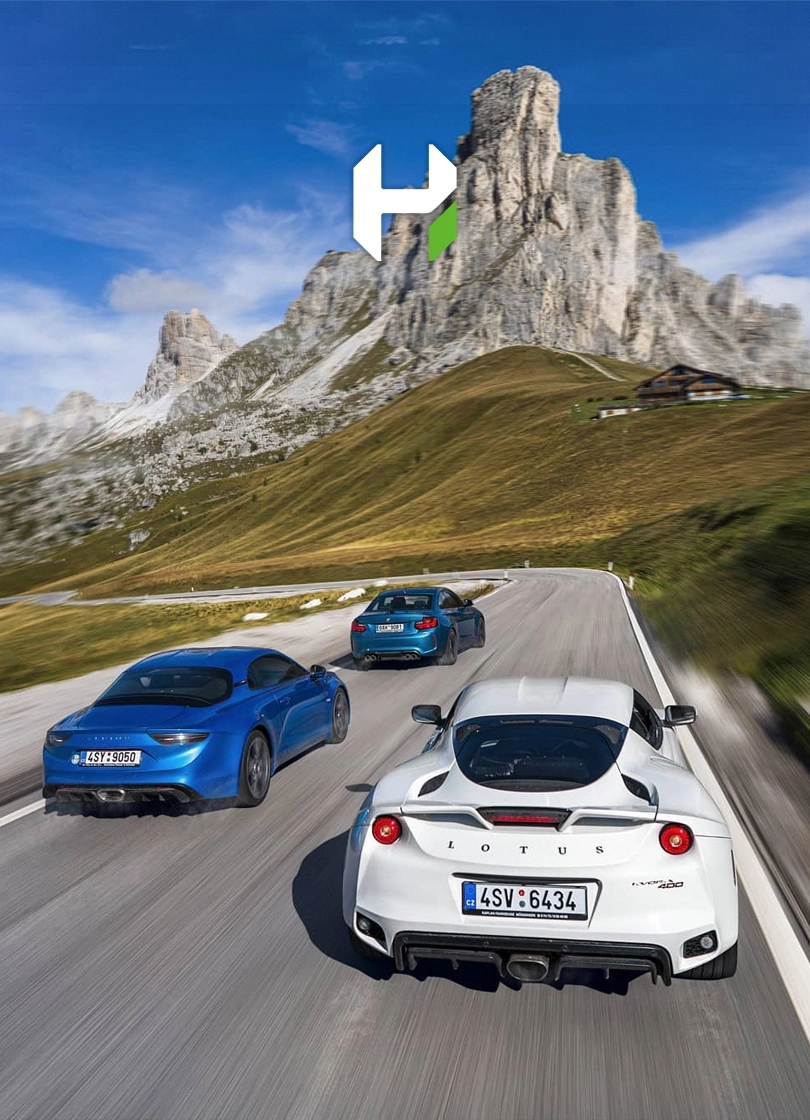IMSA body kit for Mercedes AMG GT Coupe S
Aerodynamics is probably the topic that has been dealt with most extensively in this project. With the help of computer simulations, IMSA optimizes the carbon fiber body of the RXR ONE, which is baked in the autoclave, according to the principle "form follows function". The external appearance of the Super GT sports car leaves no room for doubt and polarizes with a targeted design language. This is no ordinary wide body kit, but specially designed and newly developed body parts. In order to properly cover the widened axles and wheels, the front fenders were widened by 55mm and the rear 65mm. In addition to a ventilation opening for the rear brake ventilation, the side skirts also have a connection to the completely closed vehicle underbody.
Tests in the wind tunnel have shown that some of the key aerodynamic problems can be solved more easily with a small-series product than with a mass-produced product. For example, the front bumper contains large openings for the radiators, while the bonnet houses an intake funnel for cooling the turbochargers and a vent duct for the main water cooler. Together with the ventilation openings on the wheel arches, the closed underbody and the carbon fiber diffuser, the RXR ONE generates significantly more downforce than the base vehicle. The adjustable front splitter and the adjustable rear wing ensure additional downforce, especially on the racetrack. With all the details listed, the list of all changes would be too long, so the overall concept can best be described as "uniquely uncompromising".


